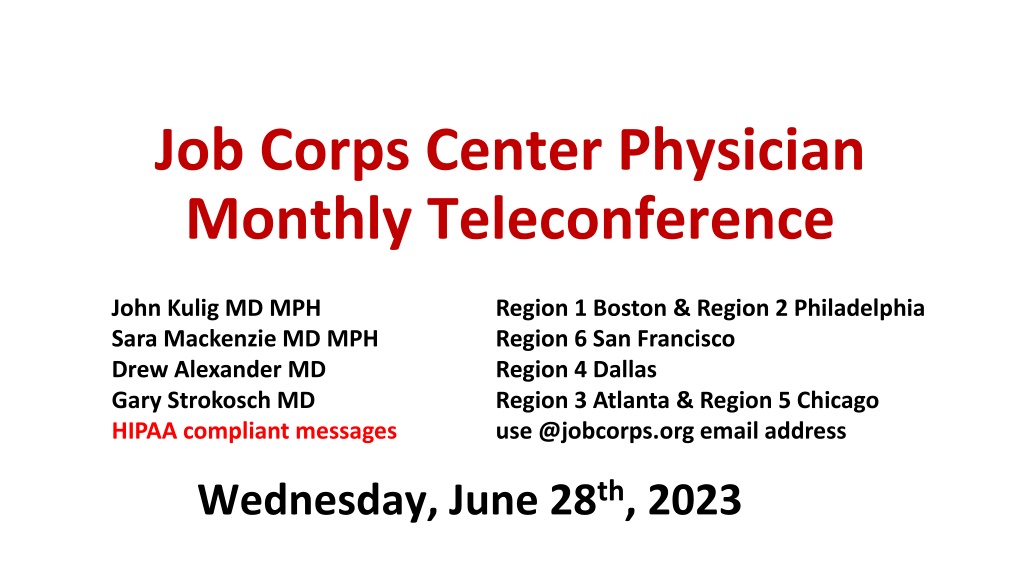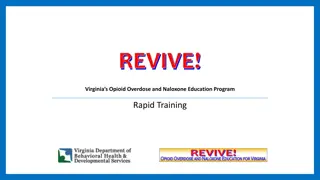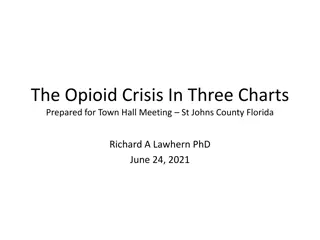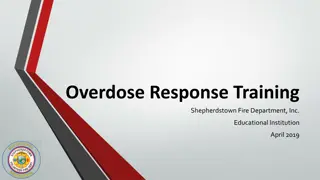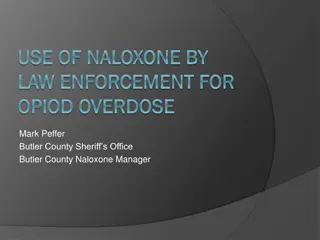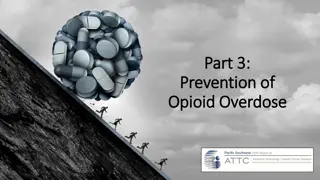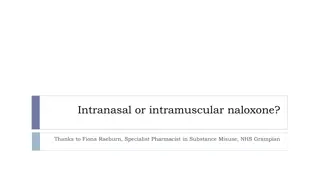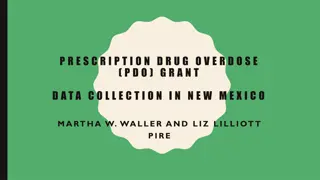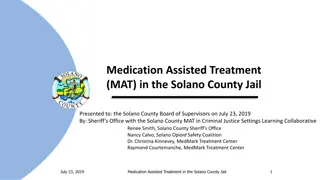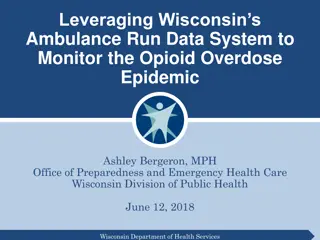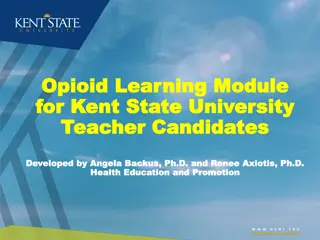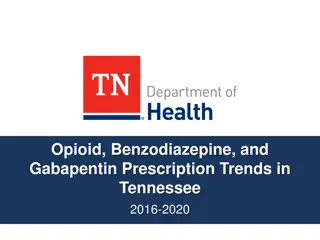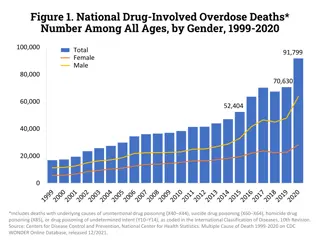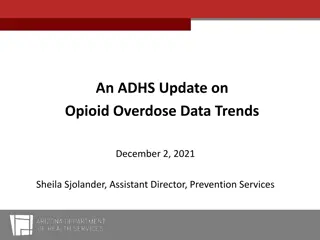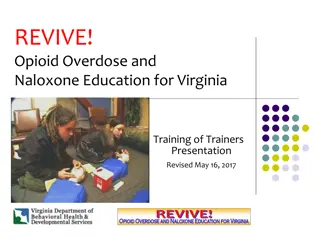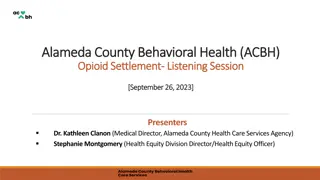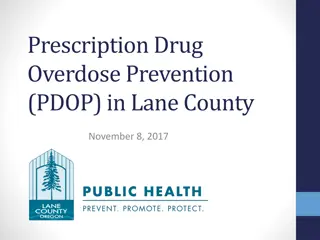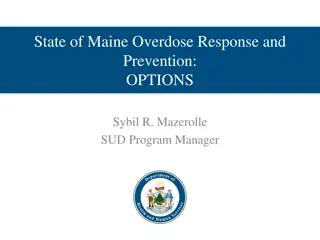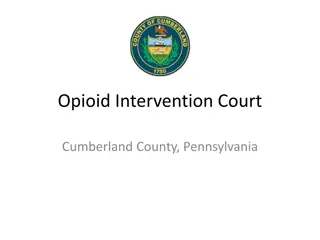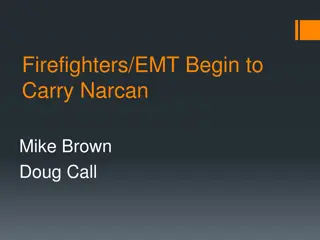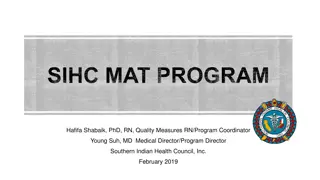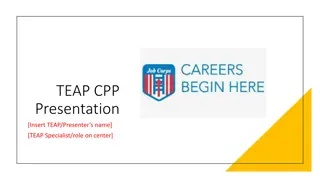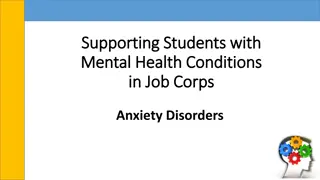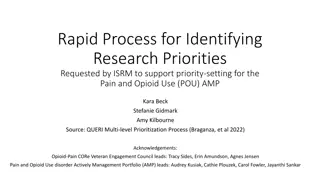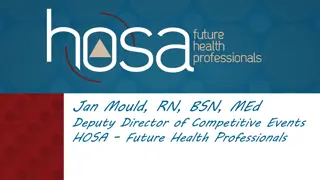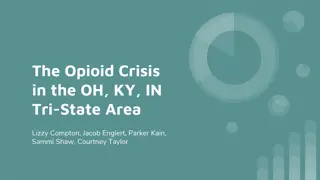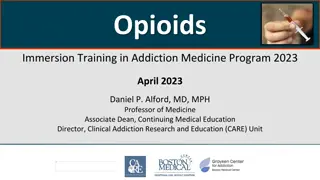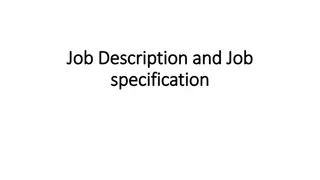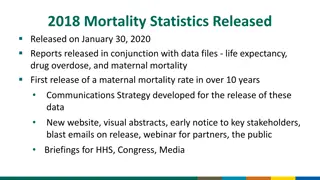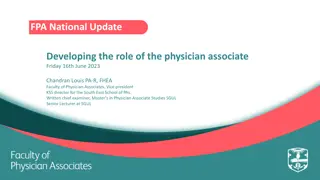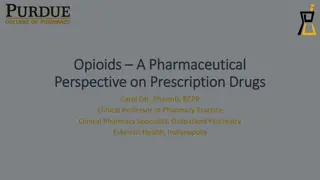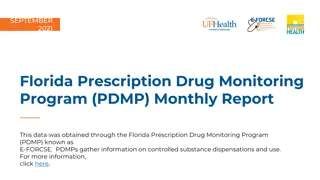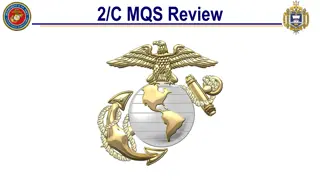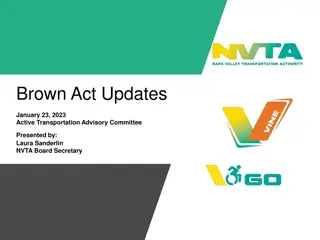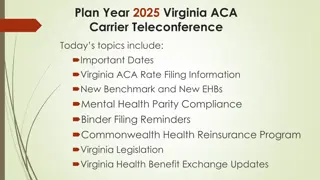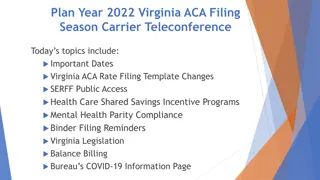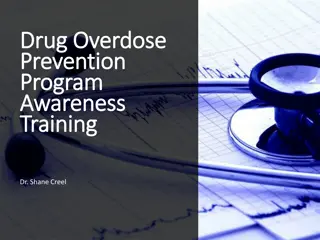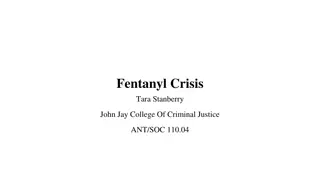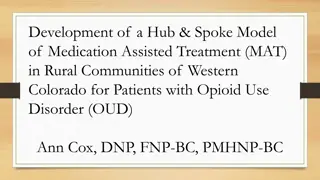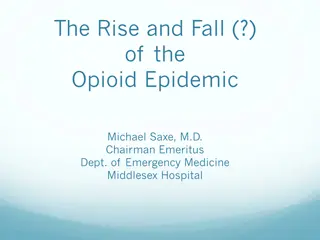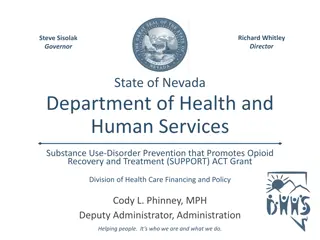Job Corps Physician Monthly Teleconference and Opioid Overdose Response Guidelines
Job Corps conducts a monthly teleconference for physicians across different regions. Zero new cases of COVID-19 among Job Corps students were reported. Guidelines for responding to opioid overdose in Job Corps include the availability of Narcan kits in various locations and staff training on recognizing opioid overdose signs and administering naloxone.
Download Presentation

Please find below an Image/Link to download the presentation.
The content on the website is provided AS IS for your information and personal use only. It may not be sold, licensed, or shared on other websites without obtaining consent from the author. Download presentation by click this link. If you encounter any issues during the download, it is possible that the publisher has removed the file from their server.
E N D
Presentation Transcript
Job Corps Center Physician Monthly Teleconference John Kulig MD MPH Sara Mackenzie MD MPH Drew Alexander MD Gary Strokosch MD HIPAA compliant messages Region 1 Boston & Region 2 Philadelphia Region 6 San Francisco Region 4 Dallas Region 3 Atlanta & Region 5 Chicago use @jobcorps.org email address Wednesday, June 28th, 2023
Zero new cases of COVID-19 infection reported by SIR among Job Corps students nationwide on Tuesday, June 27, 2023.
Responding to Opioid Overdose in Job Corps JOB CORPS PROGRAM INSTRUCTION NOTICE NO. 22-16 5/31/2023 Two boxes with four doses of Narcan hydrochloride nasal spray with 4 milligram (mg) naloxone must be available in the following locations: Health and Wellness Center in the Medical Emergency Response Grab-and-Go Kit Safety and Security Office in the First Aid Emergency Response Grab-and-Go Kit Each dormitory (new) Recreation (new) Academic and trade buildings/areas (new) In a portable kit for center transportation vehicles (new) Consider mounting Narcan Supply Kits (e.g. Naloxone Safety) on the wall next to fire extinguishers Automated External Defibrillator (AED) must be accessible 24/7/365 and located near the First Aid Emergency Grab-and-Go Response Kit
Responding to Opioid Overdose in Job Corps JOB CORPS PROGRAM INSTRUCTION NOTICE NO. 22-16 5/31/2023 Ensure all staff are trained on the following topics annually: Signs of an opioid overdose. This training may be provided by the Trainee Employee Assistance Program (TEAP) Specialist, an alternative staff member, or an outside organization. Naloxone/Narcan administration. All staff must: Watch the Lifesaving Naloxone (cdc.gov) training video, or a video from the Naloxone/Narcan manufacturer or professional organization, or staff may participate in an in-person training that reviews Narcan administration; and receive an electronic or hard copy of the CDC s How and When to Use Naloxone for an Opioid Overdose. Identifying opioids. This training may be provided by the TEAP Specialist, an alternative staff member, or an outside organization.
Responding to Opioid Overdose in Job Corps JOB CORPS PROGRAM INSTRUCTION NOTICE NO. 22-16 5/31/2023 Center-specific Naloxone/Narcan protocols. This staff training must include the following: Locations of Narcan nasal spray on centers. Assurance that Narcan is safe and should be administered if there is any possibility of an opioid overdose. If Narcan is mistakenly administered, no adverse effects will occur in a healthy individual. Information on state Good Samaritan or Medical Amnesty Laws (if applicable), which protect the person administering life-saving measures from legal ramifications. Guidance on responding to a student who is unconscious or losing consciousness or otherwise exhibiting symptoms of an opioid overdose. Follow-up procedures to notify the applicable center staff (e.g., Health and Wellness, Center Director) after a medical emergency.
Responding to Opioid Overdose in Job Corps JOB CORPS PROGRAM INSTRUCTION NOTICE NO. 22-16 5/31/2023 Ensure all students are trained by the TEAP Specialist, an alternative staff member, or an outside agency on the following topics during the Career Preparation Period: Role of synthetic opioids in overdose deaths and risk with use of any illicit drugs. Signs of an opioid overdose and response actions. Naloxone/Narcan administration. All students must: Watch the Lifesaving Naloxone (cdc.gov) training video, or a video from the Narcan manufacturer or professional organization; or students may participate in an in-person training that reviews Narcan administration; and receive an electronic or hard copy of the CDC s How and When to Use Naloxone for an Opioid Overdose.
Responding to Opioid Overdose in Job Corps JOB CORPS PROGRAM INSTRUCTION NOTICE NO. 22-16 5/31/2023 Center-specific Naloxone/Narcan protocols. This training for all students must include the following: Locations of Narcan on centers. Assurance that Narcan is safe and should be administered if there is any possibility of an opioid overdose. If Narcan is mistakenly administered, no adverse effects will occur in a healthy individual. Information on state Good Samaritan or Medical Amnesty Laws (if applicable), which protect the person administering life-saving measures from legal ramifications. Guidance on responding to a fellow student who is unconscious or losing consciousness or otherwise exhibiting symptoms of an opioid overdose, as outlined in How and When to Use Naloxone for an Opioid Overdose. How to alert staff of emergencies.
PIN 22-16 Attachment A. Infectious Disease and Medical Emergency Plan Template Instructions for Template Use Pursuant to Job Corps Policy and Requirements Handbook (PRH) 5.1, R18, all centers are required to develop an Emergency Action Plan (EAP). This template serves as a guide to address necessary steps in response to infectious diseases and medical emergencies per PRH 5.1, R18.a.1(d). The sections included in this template represent the minimum required components. Other components should be added as needed. Center staff drafting this plan should consider lessons learned during the COVID-19 pandemic and focus on capturing lessons learned if called to respond to a pandemic again.
Treatment Guideline Emergency Supplies, Medications, and Grab & Go Kits Equipment Automated external defibrillator (AED) Ambu bag with oral airways Glucometer Oximeter Oxygen source Stretcher/backboard
Treatment Guideline Emergency Supplies, Medications, and Grab & Go Kits
Treatment Guideline Emergency Supplies, Medications, and Grab & Go Kits Medical Supplies Ace wraps Gauze roll bandages (Kling) Bandages Needles/syringes Blood pressure cuff Stethoscope Eye irrigation bottle Tape Eye patches Tourniquet Gauze pads Tweezers
Treatment Guideline Emergency Supplies, Medications, and Grab & Go Kits Personal protective equipment (PPE) (disposable) Gloves (non-latex) Face masks Gowns All emergency response equipment and supplies must be readily accessible 24/7/365. Contents should be inspected monthly, including medication expiration dates and the oxygen tank gauges.
Xylazine Active ingredient in a non-opioid veterinary tranquilizer not approved for human use, that can worsen the life-threatening effects of opioids. When used in combination with opioid drugs such as fentanyl and heroin, xylazine may damage the ability of the brain to get enough oxygen, one of the most dangerous effects of opioid drugs, and can lead to death. Xylazine is known to cause sedation and dangerously slow breathing, heart rate, and lower blood pressure in people. Harms of xylazine and risk of fatal overdose are known to increase when used in combination with other central nervous system depressants like alcohol, benzodiazepines, and opioids like fentanyl or heroin. No response to naloxone/Narcan. NIDA
Group A streptococcal infection Mild-moderate infection Invasive infection/Sequelae strep throat necrotizing fasciitis scarlet fever streptococcal toxic shock syndrome impetigo bacteremia/sepsis cellulitis acute rheumatic fever erysipelas (face) post-streptococcal glomerulonephritis
Sore throat Most sore throat caused by respiratory viruses in adolescents and young adults (AYA) associated with cold symptoms. Viruses that cause sore throat in AYA include: influenza coronavirus enterovirus adenovirus Epstein-Barr virus (mononucleosis) Perhaps 10% to 20% due to group A beta hemolytic streptococcus (GABHS)
Sore throat When to test for strep: known exposure Centor criteria score > 2: fever, tonsillar exudate, anterior cervical lymphadenopathy, absence of cough if rapid antigen strep test negative, obtain throat culture When to test for mono: known exposure sore throat, significant fatigue, palatal petechiae, posterior cervical or auricular lymphadenopathy, splenomegaly CBC with differential, Monospot test
Treatment of strep throat Oral antibiotic: penicillin VK 500 mg bid x 10 days -or- cephalexin (Keflex) 500 mg bid x 10 days Symptomatic management: lozenges or sore throat spray acetaminophen, ibuprofen or naproxen oral hydration
Casual Marijuana Use Harmful to Adolescents National Survey on Drug Use and Health - annual - 68,000 teens - 2021 Teenagers who use cannabis recreationally are 2 to 3 times more likely to have depression and suicidal thoughts than those who don't use it. Teens who have cannabis use disorder which means they can't stop using it despite health and social problems are 4 times more likely to have those same thoughts and feelings. Marijuana use was also linked to other issues including not doing well in school, skipping school, and getting in trouble with the police. Marijuana is neither safe nor benign for the developing brain. Ref: JAMA Network: "Nondisordered Cannabis Use Among US Adolescents. May 19, 2023
High Risk TikTok Viral Internet Challenges 2023 Angel of Death challenge - the participant has to run and jump in front of a moving vehicle. The challenge is complete if the vehicle stops before hitting the person. Borg challenge - the "borg" typically consists a mixture of alcohol, electrolytes, caffeinated flavoring and water in a one-gallon jug. Devious Licks challenge - encourages students to record a video of themselves stealing or vandalizing school property. Cha Cha Slide challenge - teenagers drive recklessly to the rhythm of a song first released 20 years ago by DJ Casper - every time Casper sings slide left the driver steers the car according to the lyrics and turns into the oncoming lane. Orbeez challenge - jumping out of vehicles and firing hydrated gel balls at strangers. Beezin challenge - rubbing Burt s Bees lip balm onto the eyelids before going out - consumers believe the menthol and peppermint in the lip balm will enhance their alertness and increase their buzz while partying.
Guest speaker next month Karen Hover MD Center Physician Penobscot Job Corps Center Center for Family Medicine Eastern Maine Medical Center Bangor, Maine
Open Forum https://www.surveymonkey.com/r/DGR3K2B
Job Corps Center Physician Monthly Teleconference Next call: Wednesday, July 26th, 2023 John Kulig MD MPH Sara Mackenzie MD MPH Drew Alexander MD Gary Strokosch MD HIPAA compliant messages use @jobcorps.org email address Region 1 Boston & Region 2 Philadelphia Region 6 San Francisco Region 4 Dallas Region 3 Atlanta & Region 5 Chicago https://www.surveymonkey.com/r/DGR3K2B
